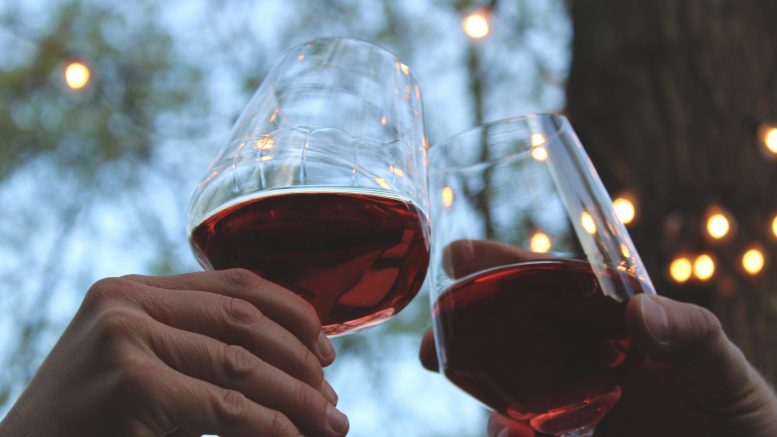By Steve Noel
As summer turns to fall, the days start getting shorter; the nights get colder; and leaves turn from green to yellow.
This is also the time for the color of our wine to start changing—from yellow to red. Yes, I like all types of wines during every season, but there is nothing like a light red wine on a cool fall day.
So, what is a light red wine? They’re often identified by several factors. They’re usually wines made from grapes grown in cool climate locations. They have flavor profiles of red fruits, like raspberries, strawberries and cherries. They’re lower in tannins and higher in acidity.
There are many grapes varieties that fall into these categories. I’ll highlight a few of my favorites that are easy to find—and a couple that are well worth the search.
Globally, the most popular light red wine is pinot noir. Pinot noir is grown in cooler regions; it’s a finicky grape that doesn’t like to grow everywhere, but wherever it does grow, it creates unique flavors. If you have tried pinots that you haven’t enjoyed, try one from a different region—and you may be pleasantly surprised. Some of my favorite pinots come from the Santa Cruz Mountains. These wines have a lot of earthy, forest-floor flavors that are often described as “funk.” Fun fact: Pinot noir wines often have such a light color that you can see through them.
Just south of the Alps in Italy is the home to both the grape and wine lambrusco. Lambrusco is a sparkling wine that can be sweet or dry, but it is always light. The bubbles make it taste even lighter, and it’s great with a little chill on it.
The next light red wine I love is Gamay noir—the most popular of which is known as Beaujolais. These wines are produced in France in the Beaujolais Appellation d’Origine Contrôlée—a wine region just like Napa and Sonoma, just with more rules that the winemakers must follow.
Red Beaujolais comes in two main styles: Beaujolais, and Beaujolais nouveau. If you haven’t tried a Beaujolais nouveau, I strongly recommend you get in line at your favorite wine store on the third Thursday of November. Beaujolais nouveau wines are fermented using carbonic maceration—an anaerobic environment fermentation process—for just a couple of weeks before release. The unique fermentation process creates an effect like having Pop Rocks candy on your tongue.
I am a huge fan of Spanish wines, and one of the most popular light Spanish wines is garnacha. Even though it is originally from Spain, it is considered a Southern Rhone wine, and if you are buying wines made from this grape from anywhere but Spain, it will be spelled in the French style as grenache.
I reached out to local sommelier and wine expert Dani Morris to ask her about her favorite light red wines.
“Grenache blends from the Cotes du Rhone region in Southern France are my favorite go-to,” she said. “I’m always running out of these bottles at my house! Cotes du Rhone pairs well with just about any dish that calls for red wine, because it is light enough not to overwhelm your palate, yet has the perfect amount of spice, fruit and tannin, which gives it some beautiful structure. Plus, these wines can be easy on your wallet and deliver extraordinary value!”
I asked Morris what makes Cotes du Rhone grenache-based wines so wonderful for this time of year.
“Cotes du Rhone is a great seasonal ‘transition’ red, because it’s not too heavy or boozy,” she said. “With its characteristic black pepper spice and a touch of funky earthiness, it will be a great complement to your late-summer recipes on the grill. When you’re ready to revive your oven from its summer slumber, grenache is the perfect accompaniment to hearty dishes like roast chicken and pork loin.”
Feeling more adventurous? Look for Zweigelt, St. Laurent or blaufränkisch wines from the cool climate of Austria and Germany. Or perhaps you can find a cinsaut, counoise or pinotage.
Always remember: Your personal taste is what matters most, but one should never be afraid to try something new—and this is the perfect time of year to try a new light red wine.
Dani Morris offers private wine tastings, wine-pairing dinners, and both online and in-person wine and spirit classes—including her eight-week wine tourist program, which starts at the end of September. Learn more at fullglassevents.com.


Be the first to comment on "Yellow leaves, red wines: The end of summer is a wonderful time to try new light reds"